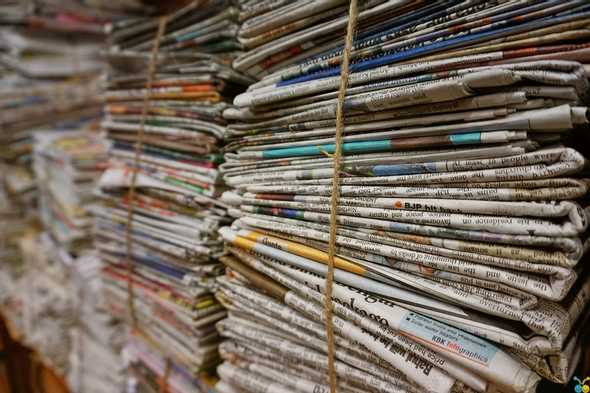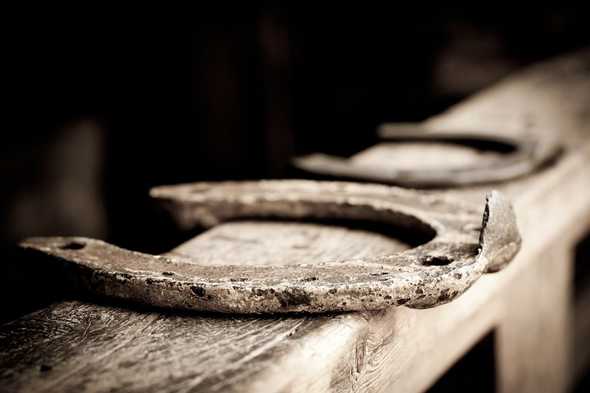Are Lottery Tickets Recyclable?
After you have scratched off your lottery tickets, what should you do with it? If you have won, the answer is easy—sign the back of it and take it either to the store where you bought it or if the winnings are big enough, a claims center. What about if you lose—should you just toss them in the trash, or can they be recycled?
Can lottery tickets be recycled? The tickets for lottery drawings can be recycled as well as some scratch-off tickets. Most scratch-off tickets, however, are not recyclable because they contain paper, plastic, and tin. You can, however, take them apart, or if you live in a state with a collection program, recycle them that way.
If you are reading this, you are probably aware that recycling centers are having a difficult time because people toss things in recycle bins that cannot be easily recycled. You don’t want to engage in wishful recycling. We will explain what makes recycling lottery tickets so difficult, what you can do to recycle them and give you some options for what to do instead.
What Is Wishful Recycling?
A common problem in the recycling industry is “wishful recycling,” or the idea that if I think it can be recycled, it probably can be. An excellent example of this is when people throw out cardboard containers that aren’t empty, or when take-out containers are not clean, causing the entire recycling process to be slowed down, or leading to 25% of recycling material having to go into the trash.
People who throw lottery tickets in a recycling bin are trying to be good recyclers, which is commendable. But if what you throw away needs to be sorted out, that slows down the recycling process.
Can Lottery Tickets Be Put in a Recycle Bin?
Some Tickets Can Be Recycled
Check the back of your Scratch-Off ticket. If it has the recycling symbol, then you are good to go. It means that the ticket was made from thick cardstock without most of the other components that go into most scratch-off tickets. A patent for such a card was filed in 1998, so it’s possible.
Some states, such as Connecticut, indicate that their tickets must be “printed on recyclable paper stock.” However, the website does not make it clear if the entire card can be recycled, or just the paper it is printed on.
Most cards have other components besides paper, which are used for various reasons, so finding a scratch-off that can be recycled is not easy.
What Is in a Scratch-Off Ticket?
Lots. A scratch-off consists of multiple layers. Each one serves a different purpose.
- Numbers. A lottery ticket needs numbers. Those numbers are randomly selected and then printed on the card along with a matching serial number so that the cards can be tracked. This can be done on cardstock with inkjet printers—all of which can be recycled.
- Hiding the numbers. The part you scratch off is not the only way the numbers are hidden. To prevent fraud, most cards have several layers of concealed coatings. These can include a metal foil or an acrylic film.
But there are layers in the layers. Cards not only have winning numbers and coatings to hide the numbers, but there is an additional feature to concealing the number: a confusion pattern.
To keep people from doing things like holding cards up to the light or using infrared light, card manufacturers add at least one layer of coating that is the same color as the lottery numbers. However, this confusion pattern consists of random lines and symbols.
What Is the Scratch-Off Material Made From?
First, the manufacturers that print scratch-off cards do not want to reveal the exact nature of what that grey stuff is. They are quick to tell you that there is no lead or other toxic material in the grey stuff.
Having said that, people who analyze them tell us that the grey stuff is made from black carbon mixed with resins and solvents. Other cards use an aluminum paste mixed with the resins and solvents.
And on top of that, another confusion pattern is imprinted on what you scratch off. One of the major manufacturers of lottery cards, Workz, has a video showing how the cards are manufactured. Watch it if you want to see what all gets tested, everything from how the thickness of the card to whether the confusion pattern is where it is supposed to be.
If You Want to Recycle Your Card
If you want to recycle responsibly, these are the steps to take:
- Look for the recycling symbol. If you find it, toss in your recycling container
- Tear your card in half and look for foil or plastic. If they have it then
- Separate the plastic or foil from the paper. Throw the plastic or foil in the trash and toss the paper in your recycling container
What Does Your Community Recycle?
Two issues further complicated what can and cannot be recycled. First, how your community recycles makes a difference. Some counties and localities want to reduce waste, so they allow for what is called co-mingling, which means all the recycled materials go into one bin. That material is then hauled off to facilities that sort through them.
Other locations offer separate containers, in which individuals must separate the items. No one has done any studies yet to see which system winds up with more contaminated materials. It would be interesting to see if people would be more likely to throw a scratch-off ticket into a co-mingled bin or if the paper is separate. Or maybe it would not make a difference at all.
Adding non-recyclable materials into the recycling process is the other complication. When non-recyclable items are added in, such as when non-recyclable plastic is thrown in with recyclable plastic, it causes two problems:
- Increasing the time needed to take out materials that cannot be recycled. The process is not entirely automated, and people are required to sort through materials.
- Lowering the quality of the recycled products through a process known as downcycling.
To see how different locations handle what cannot be recycled, you can search the websites of different counties. This example from WITN in Greenville, North Carolina, shows how different counties in the same state deal with paper. One county, Kinston, only wants clean paper, while another, Craven, includes newspapers with the inserts, and Pitt county adds paper bags and cardboard.
In Omaha, Nebraska, First Star Recycling has started recycling old lottery tickets. However, these tickets had been donated by businesses. So, if you buy tickets for a recycling program and live in the Midwest, you could recycle them that way.
Recycle Them in a Second Chance Drawing
One of the best ways of recycling them is to keep them for second state drawings. Most states now have drawings for additional prizes. To enter, you create an online account with your state’s lottery, enter the losing card numbers, and wait to see if you win anything.
In some cases, the winnings could be large enough that you have to take them to a redemption center, hand over your winning ticket, and let the lottery people deal with recycling them! You will have a bigger problem then—what to do with your winnings.
Recycle Them by Using Them in Creative Ways
 Another solution is to use them for things such as bookmarks, collages, or dozens of other projects you can find on the internet. Bamcocreate has examples of 5 DIY projects that would let you reuse your tickets.
Another solution is to use them for things such as bookmarks, collages, or dozens of other projects you can find on the internet. Bamcocreate has examples of 5 DIY projects that would let you reuse your tickets.
Bottom Line
Most scratch-off lottery tickets have a layer of plastic or tin that keeps them from being fully recyclable as a paper product. If you want to recycle them as a paper only product, you can lift the other layers off and trash those. Maybe your state has made them fully recyclable, which you can check by looking at the back for the recycling symbol.
Don’t forget — one of the 3 Rs of the recycling symbol is Reuse. Before you trash them, see if you can find a way to reuse them. See our helpful guide on what else you can do with your old lottery tickets.



